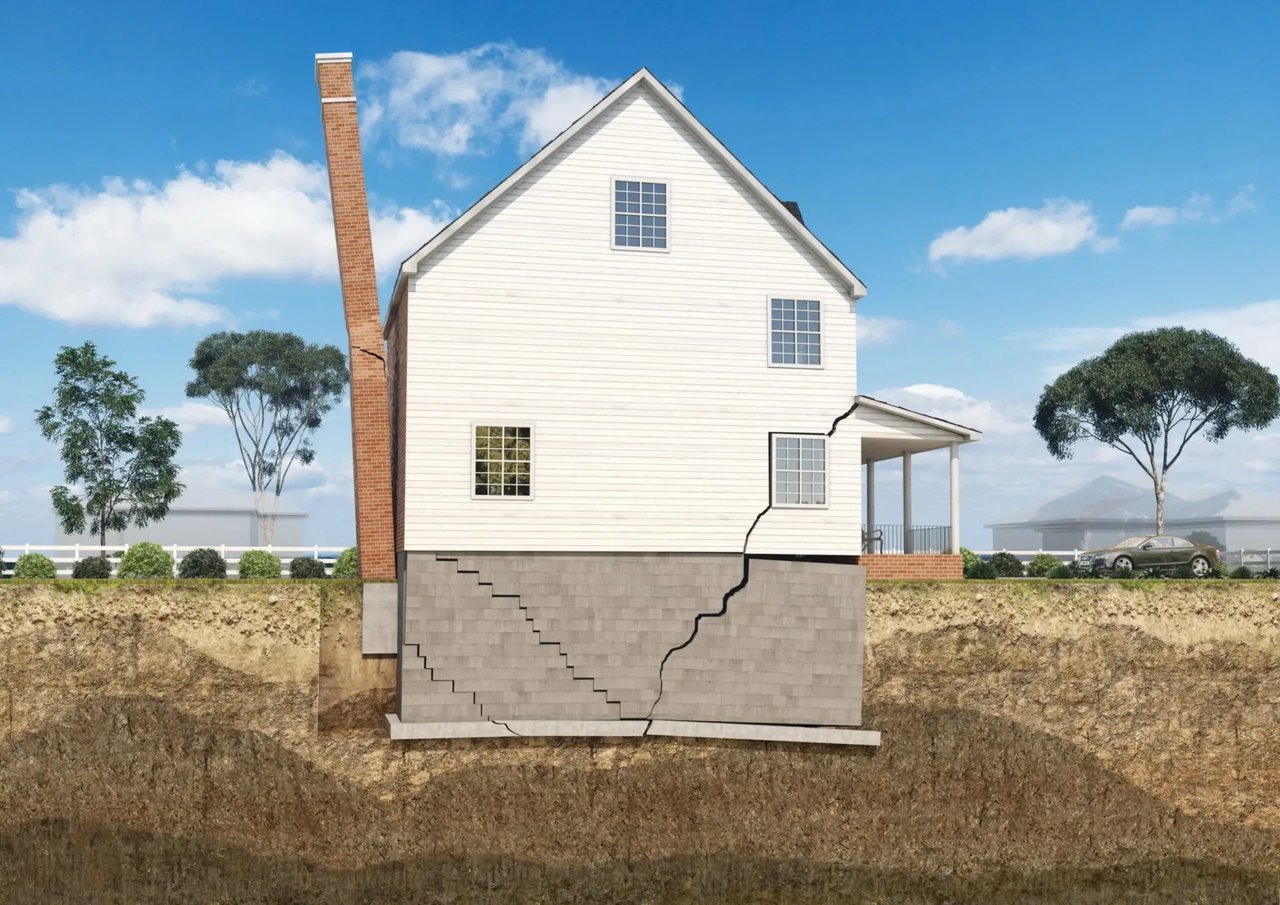Buying your first home is an exciting milestone, but it can also be a bit overwhelming. One of the critical aspects you need to pay attention to is the foundation of the house. The foundation is what supports the entire structure, and issues here can lead to significant problems down the line. Here’s a guide to help you understand what to look for in a home foundation and how to spot potential issues.
Types of Foundations
Understanding the type of foundation your potential new home has can help you anticipate and address common issues. Here are the primary types of home foundations and what to watch for with each:
1. Continuous Footing with Slab on Grade:
- Description: This foundation involves a continuous concrete footing that supports the perimeter walls, with a slab of concrete poured directly onto the ground within the footing.
- Pros: Cost-effective and quick to construct. Provides a strong, stable base for the home.
- Cons: Can be susceptible to cracking if the soil beneath shifts or settles. Proper drainage around the foundation is essential to prevent moisture buildup.
2. Continuous Footing with Basement Walls:
- Description: This type includes a continuous concrete footing that supports the basement walls, creating an underground space that can be used for storage or additional living areas.
- Pros: Adds valuable living or storage space. Helps insulate the home in colder climates.
- Cons: Can be prone to water intrusion. Requires effective waterproofing and drainage systems to prevent leaks and moisture problems.
3. Continuous Footing with Crawl Space:
- Description: Involves a continuous concrete footing that supports the perimeter walls, with a raised space between the ground and the first floor of the home.
- Pros: Easier access to plumbing and electrical systems. Good for areas with high moisture as it keeps the house off the ground.
- Cons: Can be susceptible to moisture issues, mold, and pests if not properly ventilated and maintained.
4. Pier-and-Beam with Crawl Space:
- Description: Utilizes piers and beams to support the home above the ground, creating a crawl space beneath the structure.
- Pros: Provides excellent ventilation and easy access to utilities. Ideal for areas with shifting soil or high water tables.
- Cons: Can be more expensive to construct. Requires regular inspection and maintenance to prevent moisture and pest issues.
Inspecting the Foundation
When inspecting the foundation of a potential new home, look out for these common issues:
1. Cracks:
- Hairline Cracks: These are thin cracks less than 1/8 inch wide and are typically not a cause for concern. They are often due to normal settling or shrinkage as the concrete cures.
- Check for: Consistent width and no signs of water leakage.
- Vertical Cracks: Often caused by settling and generally less concerning if they are narrow. However, if they are wide or appear to be growing, they could indicate more severe settling issues.
- Check for: Consistency in width from top to bottom, extending through the foundation, and no signs of movement.
- Diagonal Cracks: These can indicate differential settling and should be monitored closely. They may become serious if they widen over time.
- Check for: Cracks that extend from the corners of windows or doors and wider at the top than the bottom.
- Horizontal Cracks: These are the most concerning as they can indicate severe pressure on the foundation walls, often from soil pressure or water damage. These cracks can be a sign of significant structural issues.
- Check for: Cracks running horizontally along the foundation walls and any signs of wall bowing.
2. Water Damage:
- Look for signs of water intrusion, such as dampness, mold, or water stains in the basement or crawl space. Water can weaken the foundation over time and lead to serious structural problems.
- Check for: Musty odors, discoloration on walls or floors, and visible mold growth.
3. Uneven Floors:
- Check for sloping or uneven floors inside the home. This could be a sign that the foundation is settling unevenly.
- Check for: Noticeable dips or slopes in the flooring, gaps between the floor and baseboards, or furniture that doesn't sit level.
4. Sticking Doors and Windows:
- If doors and windows are sticking or not closing properly, this could be a sign of foundation movement.
- Check for: Gaps at the top or bottom of doors and windows, cracks extending from the corners of window or door frames, and misaligned doors.
When to Seek Professional Help
While some minor issues can be addressed with routine maintenance, significant foundation problems should be assessed by a professional. Here’s when you should consider bringing in an expert:
- Wide or Growing Cracks: If you notice any cracks that are wider than 1/4 inch or seem to be expanding, it's time to call a structural engineer or foundation specialist.
- Horizontal Cracks: These should always be evaluated by a professional due to their potential severity.
- Persistent Water Issues: Continuous moisture problems can lead to mold, mildew, and further structural damage. A professional can help determine the source and suggest remediation strategies.
Final Thoughts
Understanding the basics of home foundations and what to look for can help you make an informed decision when purchasing your first home. Don't hesitate to seek professional advice if you have any concerns about the foundation’s condition. Remember, a solid foundation is key to a safe and stable home.
Happy house hunting!




